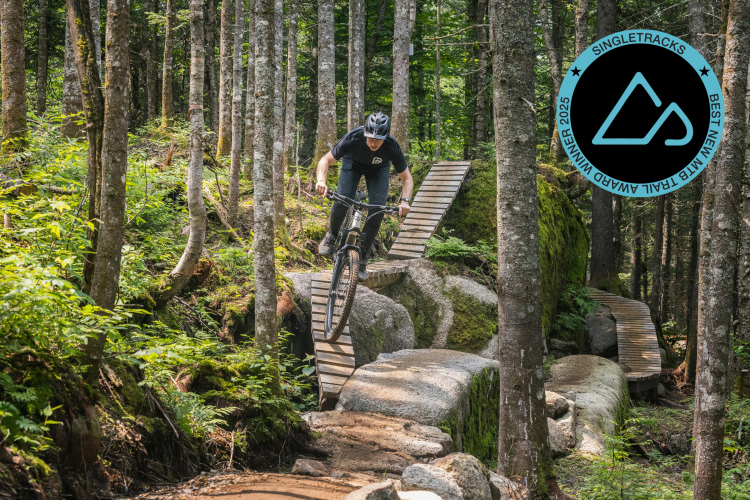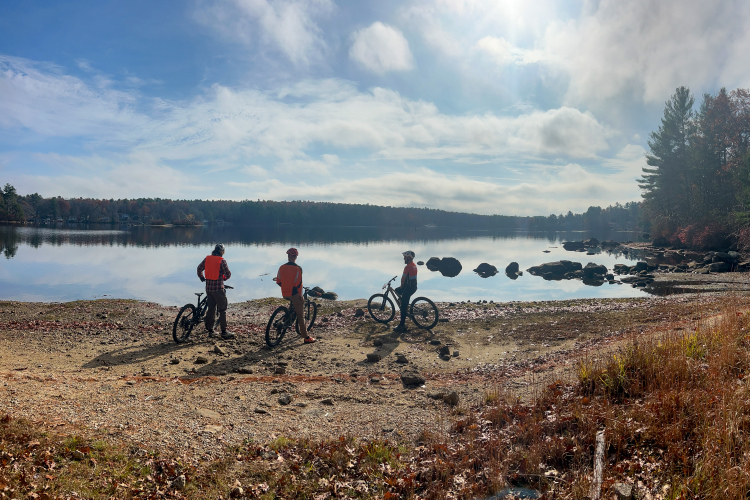
Back in January I picked up one of Chromag’s latest Stylus frames to build up as a winter bike for Vancouver’s North Shore. Working in a bike shop, I get access to a lot of cool parts at great prices and can put together some pretty fun builds. The Stylus was meant to be a no-frills spare parts build, but I got a little carried away with it, so I figured I would share it for all to see!
Frame and suspension
Let’s start with the most important parts. The frame is a size large Chromag Stylus, their 27.5-inch-wheeled bike. It’s designed around a 160mm suspension fork with a head angle of 64°, a seat angle of 76°, and reach of 488mm in a size large. I chose the Stylus frame as I had a bunch of parts to use, including a fork and wheels, that were 27.5, and while the Wideangle could have worked, I wanted to go for something pretty aggro, to suit the North Shore trails. Looking back, it might be nice to try a Wideangle too as the chainstays are thinner for a more forgiving ride and it’s a little lighter without compromising much in terms of geometry.

The fork is a Cane Creek Helm Air set at 160mm travel. I’ve been running RockShox forks for a little while, and after a poor experience with another major brand recently, I decided to try something a little different. The Helm is a really nice fork with a great ramp up and lots of adjustment, and after a lower leg service, it’s very supple. This fork has been utterly reliable the last few months and I’m stoked about it. Cane Creek designs, tests, and assembles all of their suspension products in house, which is really cool, and you can really see the attention to detail in it, from the adjustment knobs on the outside, to the air spring and volume-reduction assemblies on the inside. Very impressive.
Drivetrain
The drivetrain is obviously an important part of the bike, and I had my own ideas of what I wanted here. I’m fairly particular and seem to struggle to find drivetrains that work well for me. I’m more of a Shimano fan when it comes to drivetrains, so imagine how happy I was when Shimano brought out 12-speed XT and SLX drivetrains last year.

I’ve gone for a bit of a mish-mash drivetrain here to make something that makes sense for me. I’m running an SLX chain and cassette because they’re cheap and work just fine. I also chose the SLX derailleur because when I inevitably smash it to bits on a rock, it might as well have been the cheaper of the two. At the other end, I added an XT shifter because the shift action is really positive, it has the double upshift that SLX lacks (I use this ALL the time). and is a lot better than SLX for not a lot more money. I’m running a SRAM Stylo crank with a 30t Eagle chainring because I had both lying around and they work. The new XT trail 8120 pedals keep the cranks turning, and I’m a big fan.

Wheels and tires
I’m also known for giving rear wheels a bit of a hard time. I custom built a set of wheels for my Nomad which I then put on this bike. I built them to be cheap and strong, and so far I’m actually really impressed. For the rear hub I’ve gone for a Shimano XT 8110 hub as I needed something with a microspline driver and these hubs happen to be cheaper than buying a freehub for a lot of other hubs, with the added benefits of having great engagement and being totally silent. We’ll see how this holds up! The front hub is a Bontrager that I had lying around.

For the rims, I wanted something strong but cheap so I didn’t ruin anything too nice. I’ve always had great luck with DT swiss aluminium rims, so I bought a pair of E512 rims, which are the cheaper version of the EX471 that Aaron Gwin famously piloted without a tire down Leogang in his World Cup run. I laced these with Sapim double-butted spokes for strength, and brass nipples for durability. For tires I run the tried-and-true Maxxis Minion DHRII on the rear, and Minion DHF on the front. I find them hard to beat. In the rear I run a Cush Core, both to protect the rim, and for the improved ride feel. This is actually much more noticeable on the hardtail as it turns out; the tire feels much better damped when hitting square edges and can be run at lower pressures and thus has a lot of grip. I’m a huge Cush Core fan. Despite not being very gentle with my rear wheel, it’s still running straight and true with great spoke tension and only some very minor dings.

Everything else
I seem to have gone for a Pacific Northwest/British Columbia type build, because I have a few components from area brands, mostly because I like the product and these areas are full of mountain bikers producing cool stuff. The Chromag brand is based in Whistler, BC which meant I was able to visit their head office to pick the frame up. I’m running a Seattle-based PNW Components Bachelor dropper post that I’ve had on test (see the review here) and it’s still going great. The saddle is a WTB Silverado Team because it seems to fit me well.

At the cockpit I’m running bars and stem from Squamish-based OneUp components. They’ve been kind enough to lend these for test so look for a shoot-out between these and a few other bars. I’m loving the stubby 35mm stem on the Stylus because the reach is pretty long and it provides some nice snappy handling. For grips I’m running DMR Deathgrips which are thick and tacky. I’ve tried a few different grips and keep coming back to these, they’re just so comfy.

The brakes are a set of the Shimano MT520 brakes that I reviewed over a year ago. This is a different pair, but I loved the performance they had for such a steal of a price that I decided to get another set for this bike. So far so good… again! The brakes are paired with Shimano RT86 rotors because they look cool.

If you have any questions about the build, add them in the comments below. Hopefully this inspires you to make your next bike a custom build!











3 Comments
Feb 22, 2020
Feb 20, 2020
Feb 21, 2020